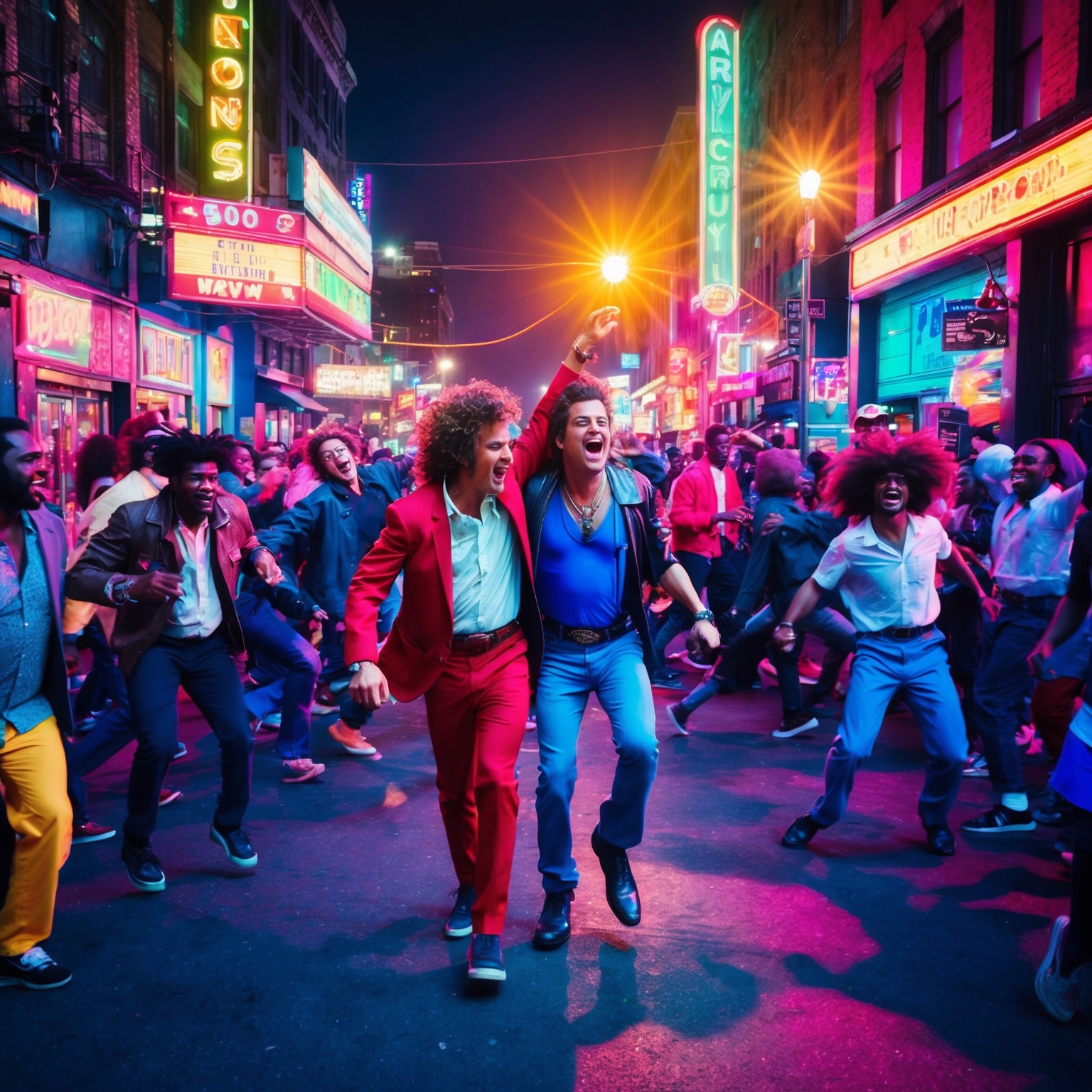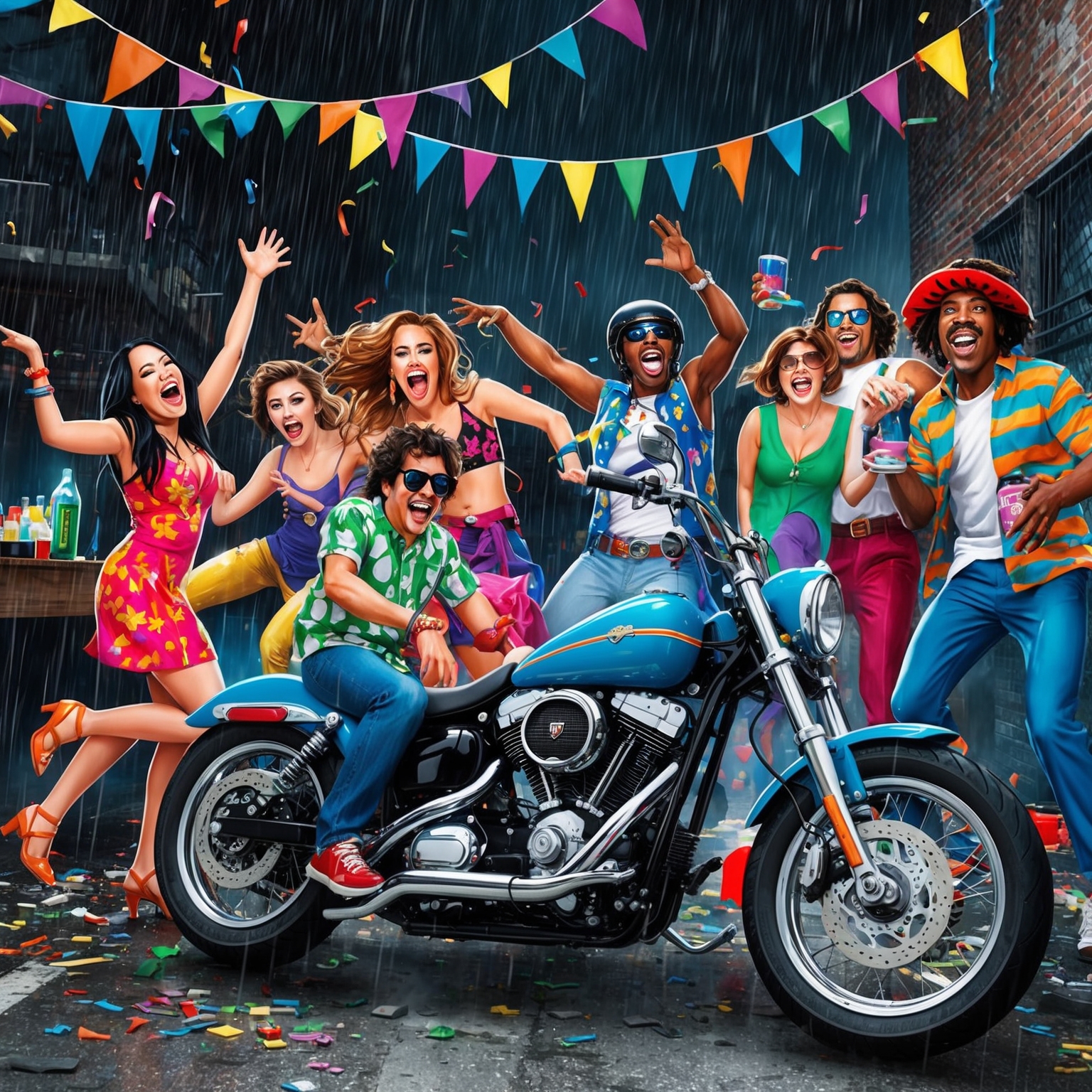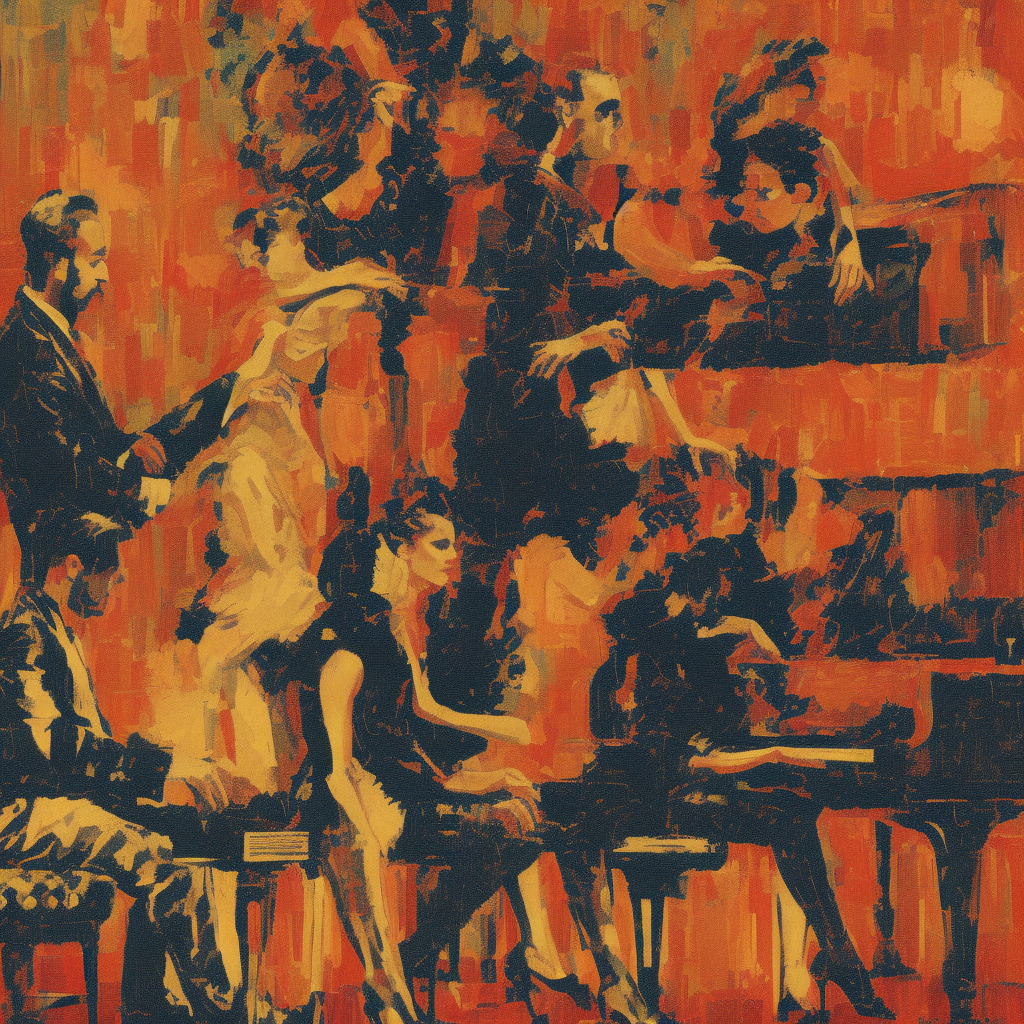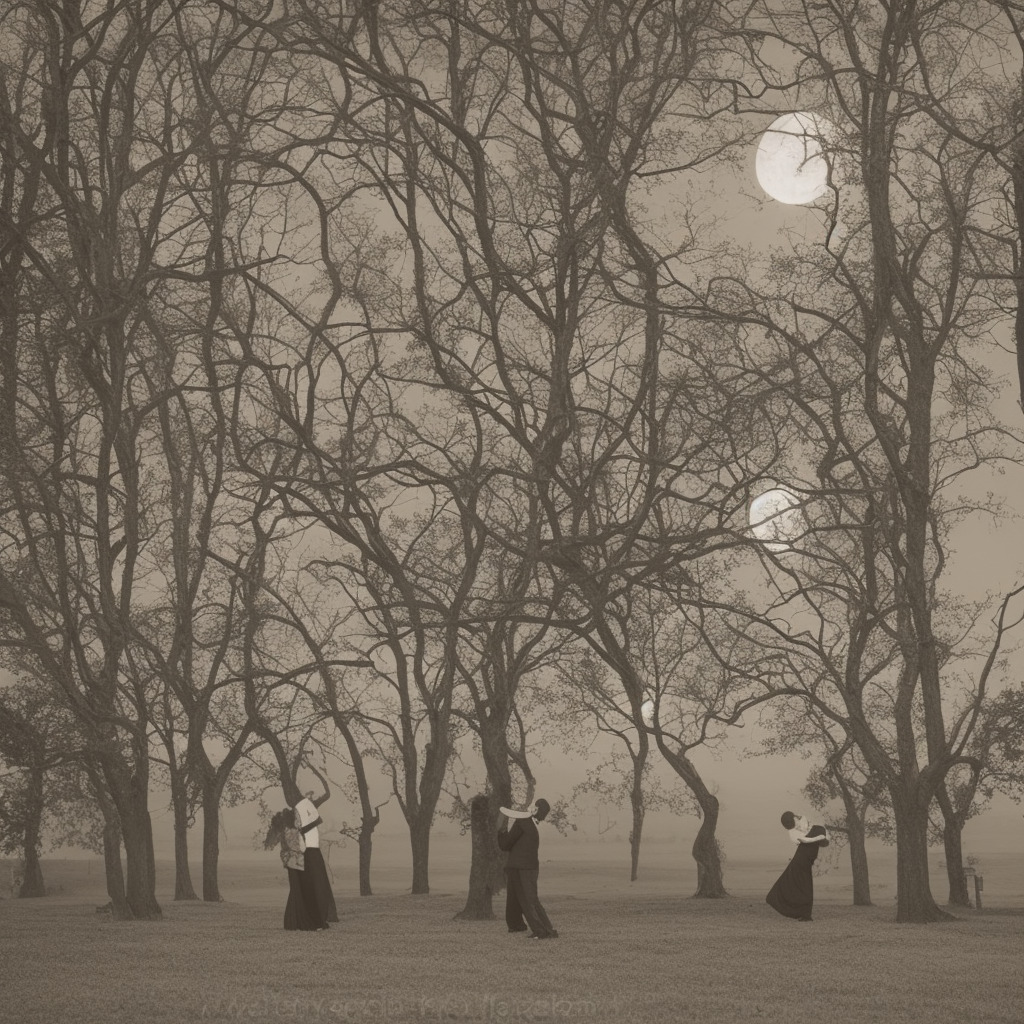Exploring Billy Joel’s Musical Journey
Billy Joel, renowned for his storytelling prowess, captured the essence of rock and humor in “You May Be Right,” a song that highlights his artistic evolution during the vibrant music scene of the 1980s.

Billy Joel, an essential icon in the tapestry of American music, has crafted songs that resonate with both the everyday experiences and the profound emotions of his listeners. “You May Be Right,” released in 1980, is one of those tracks that encapsulates his versatility and charm. This song stands as a testament to Joel’s ability to blend rock and roll energy with relatable storytelling. Known for his robust catalog, Joel has won numerous fans with his intrinsic knack for portraying the ebbs and flows of life through his music. This particular track is emblematic of the raw, unabashed style that characterized his work during this period.
Born and raised in the vibrant borough of the Bronx, New York City, Billy Joel was immersed in a diverse musical landscape from an early age. His career began taking shape in the late 1960s, but it was in the 1970s and 1980s, particularly around the release of “You May Be Right,” that he solidified his place in the pantheon of great American songwriters. By the time this song was released, Joel was already a household name, having achieved breakthrough success with earlier albums. Yet, “You May Be Right” marked another layer of his maturation as an artist, showcasing his ability to blend humor with grit, a trademark that became his signature style.
The creative process behind Billy Joel’s songs often involved collaboration and introspection. During the era when “You May Be Right” was conceived, the music scene was a blend of emerging punk influences and a resurgence of rock, creating a fertile ground for innovation. Joel found himself in a dynamic period of musical experimentation, where his songwriting capabilities were continuously challenged and refined. Collaborations with seasoned musicians not only enriched his music but also provided the perfect backdrop for his distinctive voice and piano prowess to shine.
The Musical Genius Behind ‘You May Be Right’
Explore the multi-faceted role of Billy Joel, the composer of ‘You May Be Right.’ Discover how his diverse influences, unique style, and keen musical instincts shaped this classic rock anthem.

Often hailed as one of the quintessential songwriters of his time, Billy Joel, the composer of ‘You May Be Right,’ has left an indelible mark on the musical landscape. Born on May 9, 1949, in The Bronx, New York City, Joel grew up with the vibrant sounds of classical music, thanks to his classically trained pianist father. His formal piano lessons began at a tender age, laying a firm foundation for his future musical pursuits. Despite personal challenges and an unconventional path to stardom, Joel’s persistence and passion for music defined his prolific career.
Billy Joel’s musical style is a fusion of rock, jazz, classical, and pop, a testament to his diverse influences. Artists such as The Beatles, Ray Charles, and The Rolling Stones played significant roles in shaping his sound. Joel’s compositions often include intricate piano solos and harmonies, reflecting his classical training and an affinity for creating rich musical tapestries. This eclectic mix is evident in ‘You May Be Right,’ where he melds rock and roll energy with catchy melodies.
Collaborations have been vital in Billy Joel’s career, even though he is known for being a highly self-sufficient artist. His longstanding partnership with producer Phil Ramone was crucial, fostering a creative environment where Joel’s compositions could flourish. For ‘You May Be Right,’ Joel’s role went beyond merely writing music; he was also deeply involved in arranging and conceptualizing the track. His composition techniques, particularly in using piano riffs and dynamic shifts, played a crucial role in delivering the song’s edgy yet inviting aura.
Celebrated Covers and Cultural Impact
“You May Be Right” by Billy Joel is a song celebrated more through its cultural impact than conventional awards. Its dynamic rhythm and engaging lyrics have inspired numerous covers, with notable renditions by country star Keith Urban and a homage from the hit show ‘Glee’. Beyond music, the song’s lively presence in television series continues to affirm its relevance.

While “You May Be Right” by Billy Joel may not have amassed a trophy cabinet overflowing with awards, its lasting impact on pop culture tells a story of its own merit. Released in 1980 as part of the album Glass Houses, the song showcases Joel’s knack for blending rock and pop elements with a dash of irreverent humor. Although it didn’t clinch major awards, its nomination for its contribution to the rock genre helped cement Billy Joel’s status as a musical stalwart in the industry. As noted, he was already an established artist by the time of this release, with numerous Grammy accolades to his name for other works.
The song’s infectious energy and catchy lyrics have made it a favorite for cover artists. In 2010, country singer Keith Urban performed a lively cover of “You May Be Right” during a New York City concert, much to the delight of fans who appreciate both urban’s country style and Joel’s classic rock. In addition, the hit television show Glee featured a rendition of the song, exposing it to a new generation appreciative of vintage rock tunes. These covers underscore the song’s versatility and broad appeal, crossing musical genres and era lines.
“You May Be Right” has also found its way into various visual mediums. It has been featured in a number of television shows, notably an episode of the early 2000s comedy-drama series My Name is Earl. The song’s upbeat tempo and rebellious lyrics make it an ideal fit for visual storytelling, injecting scenes with its buoyant energy. Its presence in such contexts keeps the song alive in popular consciousness, revealing its timeless nature and Billy Joel’s enduring influence on music and culture.
Climbing the Charts: The Journey of ‘You May Be Right’
Billy Joel’s ‘You May Be Right’ quickly climbed the charts, peaking at number 7 on the Billboard Hot 100. As a follow-up to prior successes, its catchy rock sound further cemented Joel’s influence in the music industry.

Billy Joel’s electrifying hit, ‘You May Be Right,’ was released on March 12, 1980, as the opening track on his album, Glass Houses. This invigorating rock anthem quickly captivated audiences, demonstrating Joel’s knack for blending catchy melodies with relatable lyrics. Upon its release, the song made a compelling debut, quickly climbing to number 7 on the Billboard Hot 100 chart. This immediate success underscored Joel’s prowess in capturing the mood and spirit of the 1980s with a sound that resonated widely with listeners. As Joel had already established himself with numerous hits, ‘You May Be Right’ further solidified his reputation as a significant force in the music industry.
Comparatively, ‘You May Be Right’ was a follow-up to Joel’s previous successes rather than a breakthrough hit. His prior album, 52nd Street, had proven his ability to produce chart-topping singles, and ‘You May Be Right’ continued this trend by maintaining high rankings alongside other major tracks of the time. This song showcased not only Joel’s consistently high performance in chart rankings but also his ability to evolve artistically while maintaining commercial appeal. Interestingly, the track’s initial chart success also influenced Joel’s subsequent works, affirming his rock-centric direction in the early ’80s.
The song was bolstered by a robust marketing campaign that included memorable live performances and the creation of a music video, a relatively novel promotional tool for the era. ‘You May Be Right,’ through airplay and public engagements, quickly became a fan favorite and received critical acclaim for its raw energy and lyrical wit. The track was praised for its infectious rhythm and Joel’s unapologetic storytelling, further engraining it into the cultural consciousness of its time. Although it didn’t win major awards, its enduring popularity and influence on rock music is undeniably significant.
Exploring the Visuals of ‘You May Be Right’
Dive into the creative visual interpretations and live performances that have brought Billy Joel’s “You May Be Right” to life, exploring how fans and performances compensate for the absence of an official music video.

Billy Joel’s hit song “You May Be Right” is instantly recognizable, not only for its catchy tune but also for its rocking narrative that pulls listeners into a world of delightful chaos. The absence of an official music video from the era has led enthusiastic fans to create their own visual interpretations of the song.
Those fan-made videos focus on capturing the spirit of the song’s lyrics, often featuring scenes of youthful rebellion, late-night adventures, and quintessentially 80s imagery. Common themes that emerge include the joy of living on the edge and bustling night-life, complementing the dynamic energy and narrative of thrill that Billy Joel’s performance encapsulates.
Live performances, particularly his irresistible rendition at Shea Stadium, serve as a rich visual counterpart. The intensity and charisma witnessed during live events often exceed what one could achieve in a studio, captivating viewers and making such performances legendary in Billy Joel’s storied career. The audience’s fervor and resonating energy elevate these renditions, giving them life beyond a traditional music video format. These elements collectively contribute to the legacy and the sustained popularity of this classic rock anthem.
Unraveling the Musical Composition of ‘You May Be Right’
Explore the intricate musical structure of Billy Joel’s ‘You May Be Right,’ from its lively chord progression and melodic hooks to the unique instrumental blend that defines its sound.

‘You May Be Right’ by Billy Joel is a quintessential rock piece that embodies a straightforward yet compelling musical structure. The song is primarily set in the key of G major, lending an upbeat and energetic quality that aligns with its lyrical bravado. The use of standard rock instruments such as electric guitar, bass, and drums provides a solid foundation for the track, while the piano, an instrumental hallmark of Joel’s music, infuses it with melodic richness. This combination creates a harmonious blend that supports the song’s narrative.
The chord progression in ‘You May Be Right’ follows a classic rock sequence, employing chords like G, C, and D with a tempo that drives the narrative forward at a brisk pace. This contributes to the song’s catchy and accessible nature, making it a staple on rock playlists. Rhythmically, the song features a driving beat that echoes the themes of recklessness and spontaneity found in the lyrics, further highlighted by the syncopated piano rhythms that Joel expertly plays.
Analyzing the melody and harmony, ‘You May Be Right’ showcases Billy Joel’s adeptness in crafting hooks that resonate with his audience. The vocal line is both playful and impactful, quick to imprint itself onto the listener’s memory. The harmony, notably supported by backing vocals, adds depth and contrasts the lead, which contributes to the overall dynamism of the track. Instrumentally, the saxophone solo provides a unique sound characteristic of Joel’s stylistic experiments at the time.
In the context of Joel’s discography, ‘You May Be Right’ can be seen as a turning point that reflects his evolution as an artist. Comparing it to earlier albums like ‘The Stranger,’ the song’s upbeat and unapologetic tone stands out, indicating his shift towards more rock-influenced sounds blended with his signature piano-driven melodies. This song, produced by Phil Ramone, was part of the album ‘Glass Houses,’ which marked a decisive move to harder-edged rock elements. Recorded at A & R Recording, Inc. in New York, the studio’s vibrant atmosphere and advanced acoustics greatly contributed to the track’s polished sound. Anecdotes from the recording sessions suggest that the spontaneity and raw energy Joel sought were effectively captured, something palpable in the final track.
Exploring the Layers of ‘You May Be Right’
Billy Joel’s ‘You May Be Right’ offers a vivid narrative filled with self-aware humor and reckless abandon, exploring themes of madness and cultural references through compelling storytelling and literary devices.
Saturday I said, “I’m sorry”
Sunday came and trashed me out again
I was only having fun
Wasn’t hurting anyone
And we all enjoyed the weekend for a change
I’ve been stranded in the combat zone
I walked through Bedford Stuy alone
Even rode my motorcycle in the rain
And you told me not to drive
But I made it home alive
So you said that only proves that I’m insane
You may be right
I may be crazy
Oh, but it just may be a lunatic you’re looking for
Turn out the light
Don’t try to save me
You may be wrong for all I know
…
******* This Lyrics is NOT for Commercial use *******

Billy Joel’s song “You May Be Right” delves into the chaotic and carefree lifestyle often romanticized in rock music. At its core, the song presents a lyric-driven narrative that emphasizes themes of recklessness, self-awareness, and humor. The protagonist openly admits to their own madness, reflecting a juxtaposition of self-destructive behavior with an acknowledgment of personal faults.
The storytelling in this song is remarkably vivid. Joel employs a first-person perspective, crafting a conversational tone that engages listeners directly. Through anecdotes like crashing a party, traversing dangerous neighborhoods, and surviving a motorcycle ride in the rain, the lyrics paint a picture of the protagonist’s adventurous yet flawed persona. This vivid imagery builds a narrative of someone embracing their wild side while simultaneously questioning their sanity, leading to a chorus that acknowledges both the potential truth and absurdity of being considered a ‘lunatic.’
Metaphors and wordplay enhance the lyrical depth, with juxtaposed ideas like causing a ruckus just to convey truth. The use of phrases like ‘combat zone’ and ‘insane’ could be seen as both literal and metaphorical, emphasizing the thin line between thrill-seeking and senseless danger. Such literary devices, along with a catchy rhyme scheme, make the narrative compelling and memorable. Compared to other Joel classics, the song maintains a playful irreverence akin to tracks like “My Life,” yet it stands apart in its raw embrace of personal quirks and contradictions.
Joel’s lyrics are replete with cultural references, adding layers to the song’s appeal. The mention of Bedford-Stuyvesant, a neighborhood in Brooklyn known for its edginess, adds a gritty authenticity, likely resonating with New Yorkers and fans of urban storytelling. The same goes for the song’s setting across various weekend occurrences—these nods amplify the protagonist’s adventurous spirit. The contrasting emotions expressed resonate universally with audiences, invoking laughter, recognition, and maybe a little bit of sympathy.
🎹🎤 Ever driven home in the rain on a bike while pondering your sanity? Billy Joel nailed the vibe in You May Be Right—chaos with a side of wit! 🌧️🏍️ #RockOn https://bit.ly/4g3fb6u
Click to Tweet







